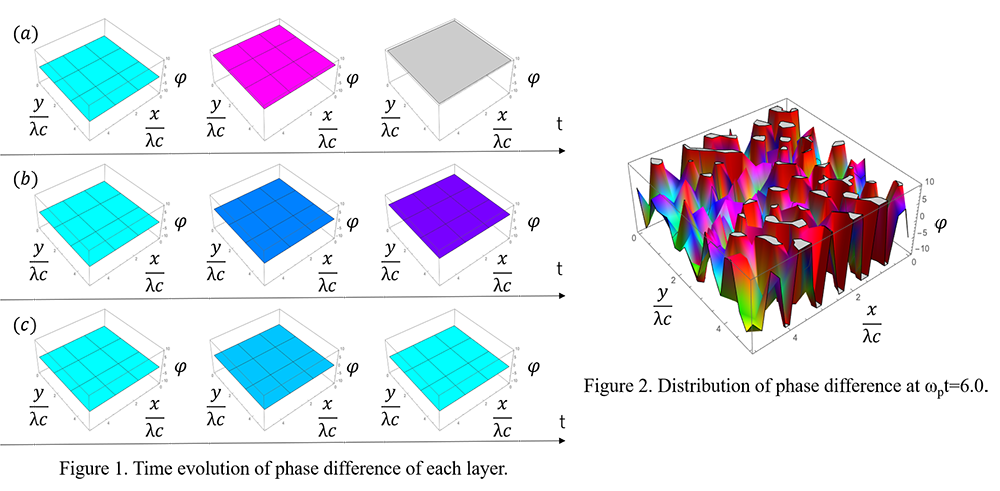PC6-4
Simulation of switching to voltage state in an intrinsic Josephson junction
*Takamasa Wachi1, Masaru Kato1
- Osaka Prefecture University1
When a current applied to an intrinsic Josephson junction (IJJ) in a copper oxide high-temperature superconductor is increased, the IJJ enters a voltage state and then the voltage rises stepwise. After these voltage states, when the current is lowered THz oscillation occurs. The voltage state is described as a running state of a particle in a washboard potential, using the RCSJ model of the Josephson junction (JJ).
In this study, we investigate these voltage state in the IJJ, using coupled layered JJ mode ([1] with the finite element method (FEM). Especially, we focus on the time evolution of phase differences in JJ’s when a low current is applied to the IJJ.
We consider an IJJ model with five layers of JJ. Fig.1(a) shows the time evolution of the spatial distribution of the phase difference Δφ(dt) in the first JJ layer for ωpt = 0, 3.2, 6.4 at Jext=5.0, Fig.1(b) and Fig.1(c) shows the same for second and third JJ layer, respectively. We can see, the first JJ’s become voltage state first. Then, second JJ becomes voltage state due to the coupling between first and second JJ’s.
In addition, as shown in Fig.2, when a low current for a long is applied and these are no voltage state however, Δφ(dt) becomes non-uniform from uniform distribution. Then, locally voltage state appears.
[1] Koyama T and Tachiki M 1996 Phys. Rev. B 54 16183
